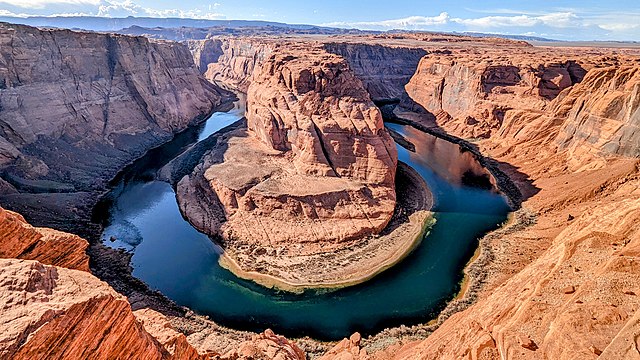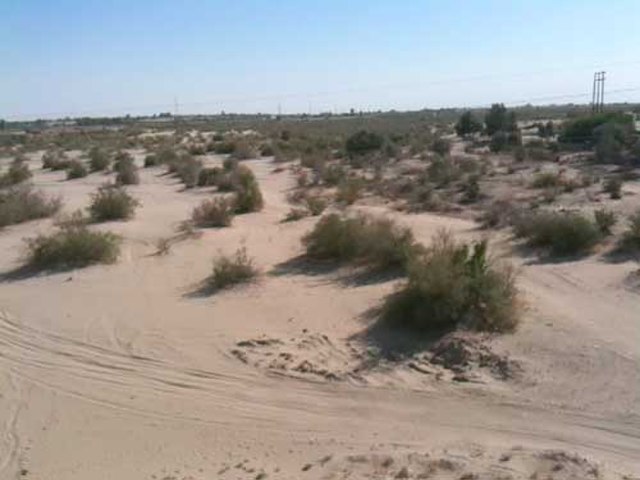The Western Slope is a colloquial term generally understood to describe the part of the state of Colorado west of the Continental Divide. Bodies of water west of the Divide flow toward the Pacific Ocean; water that falls and flows east of the Divide heads east toward the Gulf of Mexico. The Western Slope encompasses about 33% of the state, but has just 10% of the state's residents. The eastern part of the state, including the San Luis Valley and the Front Range, is the more populous portion of the state.
San Juan Mountains North of Telluride, Colorado, in the Western Slope
Painting of the Domínguez–Escalante expedition displayed in the Utah State Capitol building
The Western Slope is west of the Continental Divide, including Durango, Grand Junction, and Montrose
The Colorado River is one of the principal rivers in the Southwestern United States and in northern Mexico. The 1,450-mile-long (2,330 km) river, the 5th longest in the United States, drains an expansive, arid watershed that encompasses parts of seven U.S. states and two Mexican states. The name Colorado derives from the Spanish language for "colored reddish" due to its heavy silt load. Starting in the central Rocky Mountains of Colorado, it flows generally southwest across the Colorado Plateau and through the Grand Canyon before reaching Lake Mead on the Arizona–Nevada border, where it turns south toward the international border. After entering Mexico, the Colorado approaches the mostly dry Colorado River Delta at the tip of the Gulf of California between Baja California and Sonora.
The Colorado River at Horseshoe Bend, Arizona, a few miles below Glen Canyon Dam
Headwaters of the Colorado River in Rocky Mountain National Park, Colorado
Colorado River in the Grand Canyon seen from Pima Point, near Hermit's Rest
Colorado River as it exits the United States into Mexico beneath the San Luis Colorado-Colonia Miguel Aléman Bridge (September 2009)







